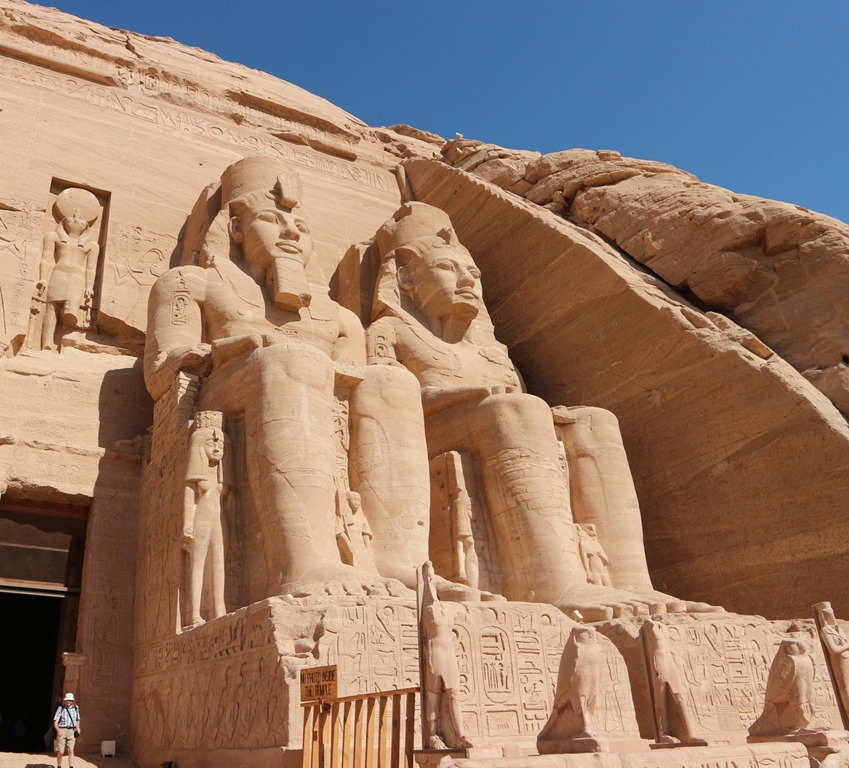
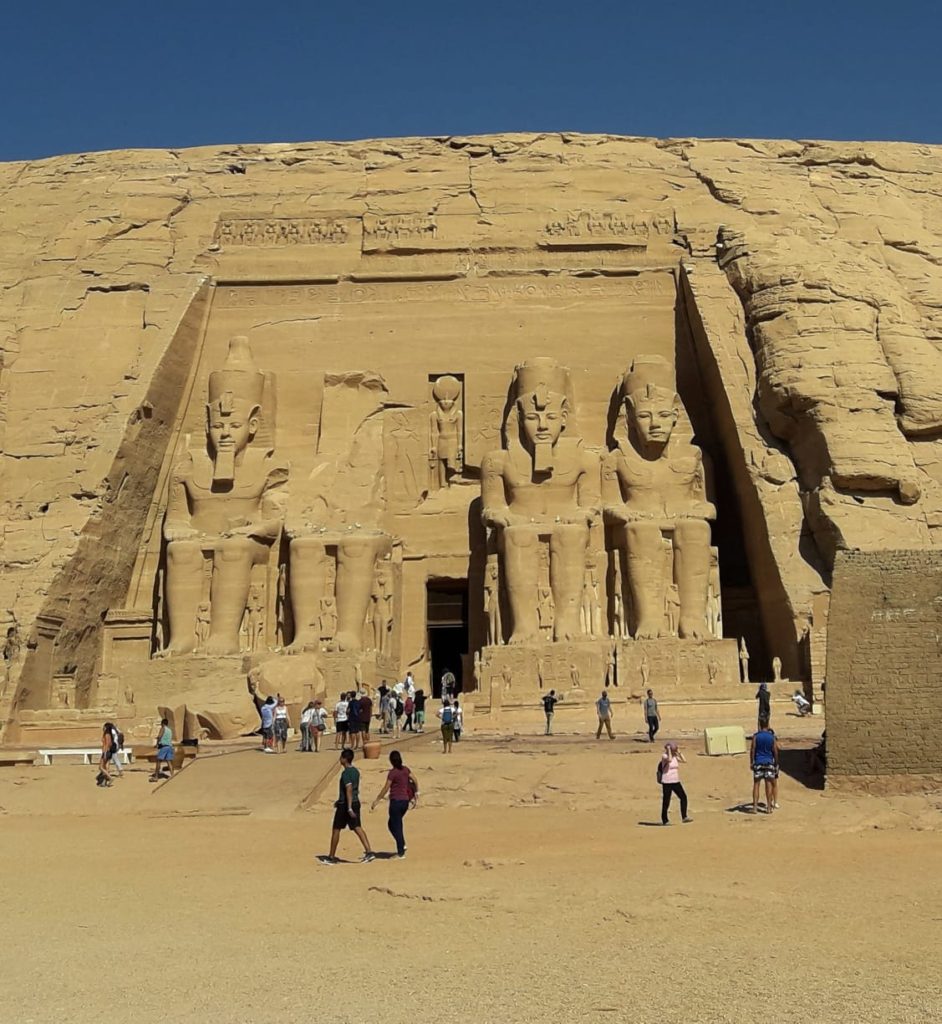 A tour day of history, displayed in all its magnificence in the form of the Abu Simbel complex followed up with a fun first-time visit to the local bazaar (market), an experience of vibrancy in color and sound.
A tour day of history, displayed in all its magnificence in the form of the Abu Simbel complex followed up with a fun first-time visit to the local bazaar (market), an experience of vibrancy in color and sound.
Abu Simbel
One of the most sort-after of the Egyptian sites for tourists is Abu Simbel. It’s a site made up of two temples Ramses II had built in 1244 BC for himself and his wife. Both temples are carved back into the solid rock face behind the impressively large facades. One of the top halves of a statue within the facade has been left where it fell, post-relocation in the 1960’s. The whole site was relocated from its submerged position, as a result of the Nile being dammed.
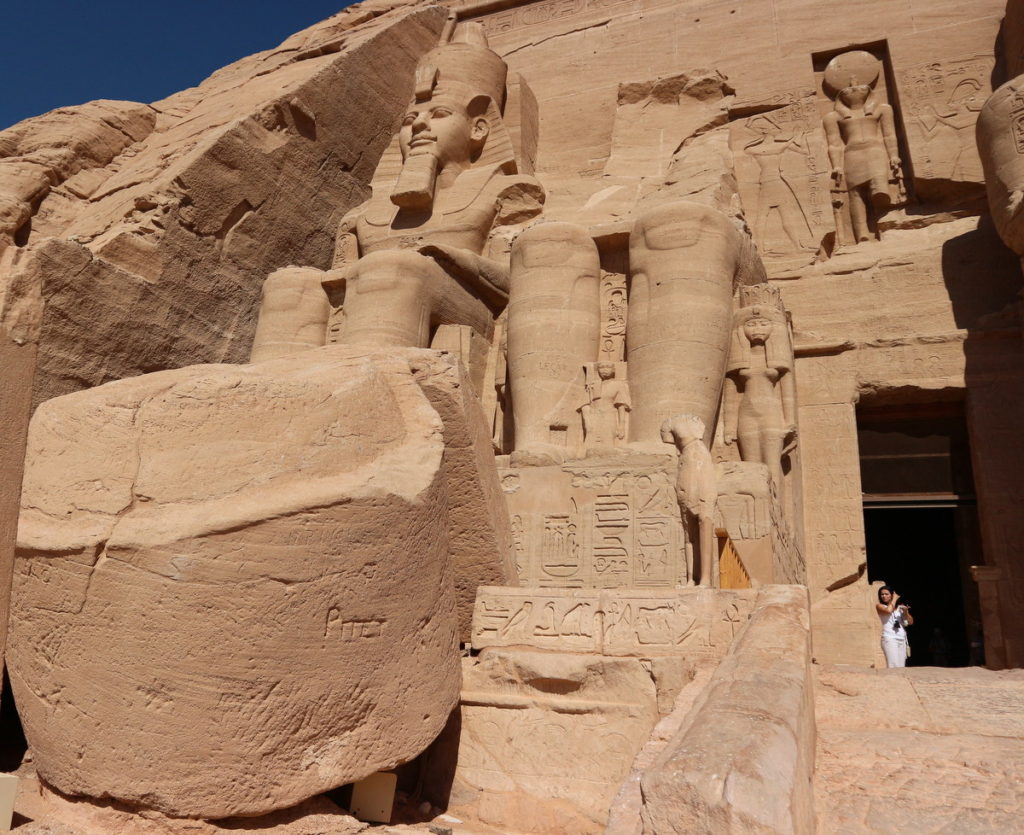
Many rooms run off the central chamber of Ramses II’s temple, the walls of which have all been carved and painted with images of his success in battle and hs offers to the gods. Because both temples are enclosed structures, the coloring is still very pronounced. You’re not allowed to take photos inside the temples although you can pay 300 Egyptian pounds and take photos officially or, like a lot of people take a few sneaky shots.
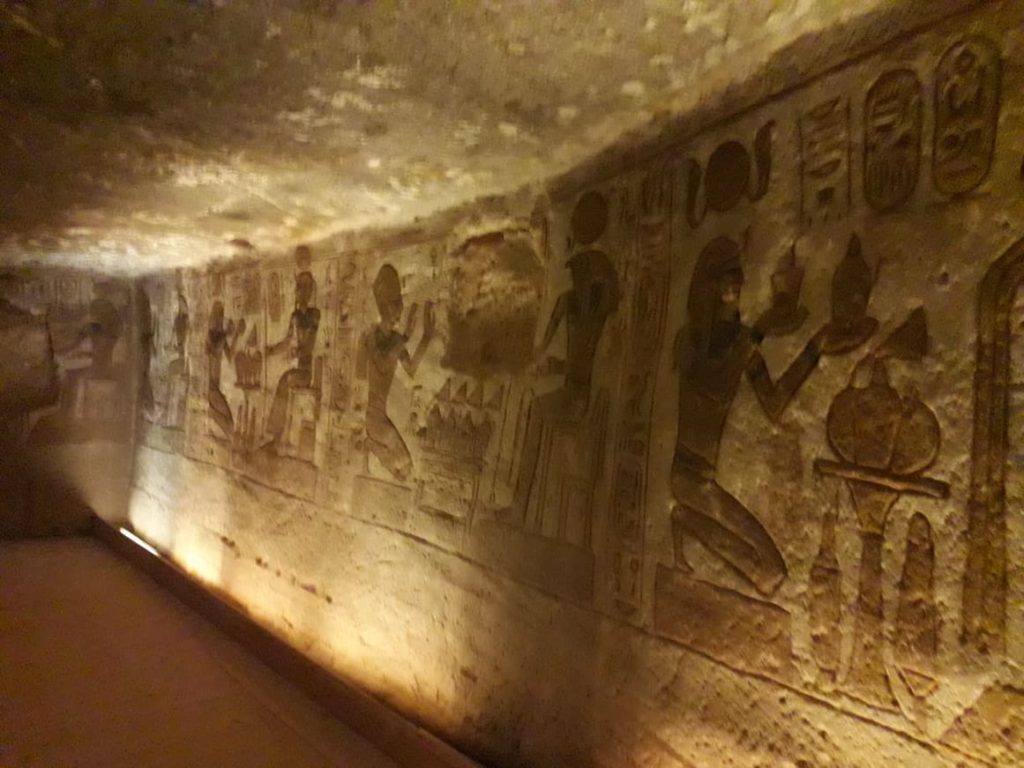
One can only presume the internally smaller of the two temples, with the most statues on its frontage, belongs to Ramses II most respected/loved wife of the 67 (recorded) ones he had. His image dominates this temple as well but at least one of the six statues is a depiction of her.
The rest of the day after our 7.5 hour trip to Abu Simbel was a free day, thankfully. It had been a 3am wakeup to ensure we fitted everything in before the sun began to scorch our hides. The temples are only 30 km’s from Egypt’s border with Sudan and it’s a three-hour trip each way by bus. An hour seemed to be enough time to walk around inside the two temples in the complex.
Eating and Ramadan
Our tour guide is following Ramadan. This means no eating, drinking, smoking and thinking of sex from sunrise until sunset. It must be incredibly hard for him, energy-wise to run the tour but also hard mentally to sit and watch us eat and drink during the day. For the evening meal we all tuck in together with the setting of the sun around 6.35pm. The food we’re eating on the trip doesn’t vary that significantly; pita bread, a mixed salad of cucumber, tomato and coriander and feta cheese with every meal. Sometimes eggplant, soft multi-grained rice, some type of meat-chicken, beef or lamb and ‘Sparrow Tongue’-some type of barley soup. All fresh and delicious.
Egyptian Bazaar
One of the girl’s luggage had not arrived with her from Athens, so fourth day into borrowing clothes we joined her for the first-time adventure of shopping in the bazaar. We seemed to be a novelty to the crowds, drawing lots of chatter, big smiles and occasionally laughter. Children accidentally-on-purpose bumped into us to see how the foreigner ‘felt’.
The Bazaar is a myriad of small shops, vibrant with noise and color. Spices in dramatically color-coded tiers, baklava, and powdered-sugar-coated biscuit treats. Kaftans in varying levels of bold and dramatic, woven bags and scarves adorned with fine, round tin discs that tinkle like a belly dancers’ swaying hips.
Persistent but undemanding stall owners entice you in with shouts of ‘pure Egyptian cotton’. The standard question after ‘hallo’ is ‘where are you from?’ One sales pitch included ‘come on, please buy, you help me, I help you.’
We finally found success, well-hidden in amongst some very glam and very un-western type clothing. A thoroughly enjoyable first experience in a bazaar.
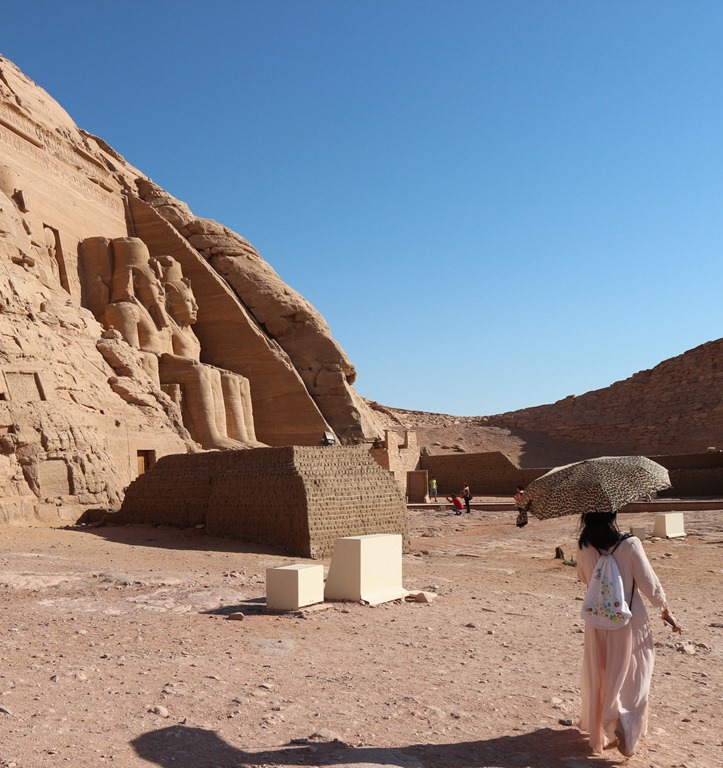


Leave a Reply